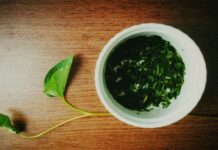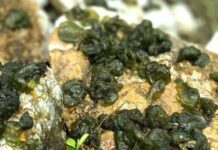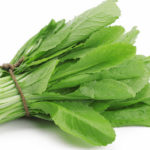Curly Kale: A Delicious and Nutritious Addition to Your Meals
Kale is a popular vegetable that is becoming a staple in many Vietnamese households due to its delicious taste and numerous health benefits. However, the question of whether it is better to eat kale raw or cooked to retain the most nutrients and freshness is one that not many people can answer.
Let’s explore the topic together and find the best way to enjoy this superfood.
1 What is Curly Kale?
 Curly Kale: A Nutritional Powerhouse
Curly Kale: A Nutritional Powerhouse
Curly kale is a leafy green vegetable with curled edges and a deep green or purple color. It has a slightly bitter taste and is closely related to other cruciferous vegetables such as Brussels sprouts and broccoli.
This vegetable has gained popularity due to its fresh flavor and exceptional nutritional profile. Kale is packed with essential vitamins, including vitamins A, C, K, B6, calcium, and iron, which support overall health and help prevent various diseases such as diabetes, heart disease, cancer, and digestive issues.
2 Raw or Cooked: Which is More Nutritious?
There is an ongoing debate among scientists about whether raw or cooked kale is more nutritious. Some argue that cooking kale reduces its nutritional value, while others claim that raw kale is harder to digest.

According to Deirdre Orceyre, a naturopathic doctor at the Center for Integrative Medicine at George Washington University (as quoted in the Washington Post): “Raw kale can be more difficult to digest and may cause gas and other digestive issues. That’s why it’s best to limit your consumption of raw kale or its juice to no more than twice a week.”
Dr. Orceyre also warns that consuming raw kale that has been treated with pesticides can be dangerous to your health and even life-threatening. Additionally, raw kale tends to have a stronger bitter taste, which may be unappealing to some people.
However, Healthline magazine offers a different perspective, suggesting that cooking kale can reduce its vitamin, mineral, and iron content.

A more neutral stance on the debate states: “Cancer studies seem to favor raw kale, while cholesterol-lowering studies seem to favor steamed kale.” This highlights that the best preparation method depends on individual needs and preferences. It’s all about finding a balance between retaining nutrients and enjoying a variety of flavors.
3 Tips for Preparing and Cooking Kale
Raw Kale: Salads and Juices

As Dr. Orceyre mentioned, kale may contain pesticide residues, so it’s important to choose organic, thoroughly wash and soak the leaves before consuming them raw. Additionally, avoid soaking or washing the leaves for too long, as this can reduce their nutritional value. Instead, try using natural cleaning agents such as vinegar, lemon juice, or baking soda.
Cooked Kale: Steaming or Stir-frying

While you can cook kale, it’s best to avoid boiling it as this can reduce its nutritional content and affect its texture. Instead, opt for steaming or stir-frying to retain the most nutrients.
Whether you choose to steam or stir-fry your kale, always cook it at low temperatures and avoid overcooking to preserve its nutritional value. For steaming, 4-5 minutes (depending on the quantity) is sufficient. Stir-frying is a great way to add flavor to your kale; simply sauté some garlic in oil and then add the kale, keeping the heat low.
We hope that this article has helped you decide how to prepare and cook kale to suit your taste and nutritional needs. Enjoy this delicious and nutritious vegetable in your meals, and stay healthy!
Source: Healthline, a trusted source for health information







































